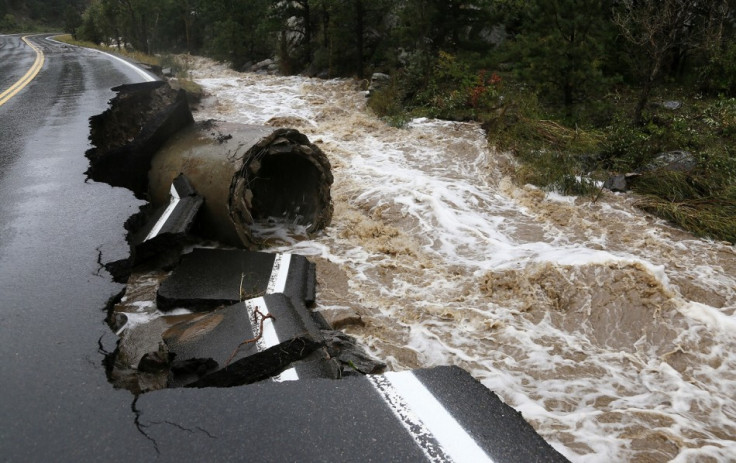Colorado 2013 storms caused more damage in one event than 100 years of flooding
Huge amounts of sediment and carbon were flushed through rivers in a matter of hours and days.

The Colorado floods of 2013 caused more damage in a single event than a century of erosion and flooding.
The floods of mid-September 2013 caused billions of dollars' worth of damage to infrastructure and homes. The floods happened when extreme rain fell on already saturated ground for two days, washing away homes and roads, and leading to the deaths of 10 people. Repair work after the floods took more than three years to complete.
One waterway in the state experienced the damage of more than 100 years of ordinary flooding in the course of a few days in September 2013. When the floods hit St Vrain Creek in northern Colorado, they shifted more than 500,000 cubic metres of land, according to a paper published in the journal Geology.
More than half of the sediment was dumped at a water supply reservoir, where it also made up more than a century's worth of deposition at the site. It resulted in a 2% loss of capacity at the reservoir.
"Identifying and quantifying the dominant processes of erosion and tracking the fate of sediment, wood, and carbon eroded during floods is important for understanding channel response to floods, downstream sediment and carbon loading, and the influence of extreme events on landscapes," the authors, led by Sara Rathburn of Colorado State University, write in the paper.
The carbon uprooted in the storms was in the form of wood and organic matter from the soil. A total of about 28,000 kilograms of carbon per square km was washed out during the floods.
St Vrain Creek and many other Colorado rivers that experienced the 2013 floods are likely to continue washing away wood, carbon and sediment from the event for years to come, the study authors note.
The Colorado floods cost an estimated $3.9 billion (£3.1 bn) in damage, with 18,000 people having to be evacuated, 1,850 homes destroyed and 200 businesses destroyed, the Denver Post reported.
© Copyright IBTimes 2025. All rights reserved.






















